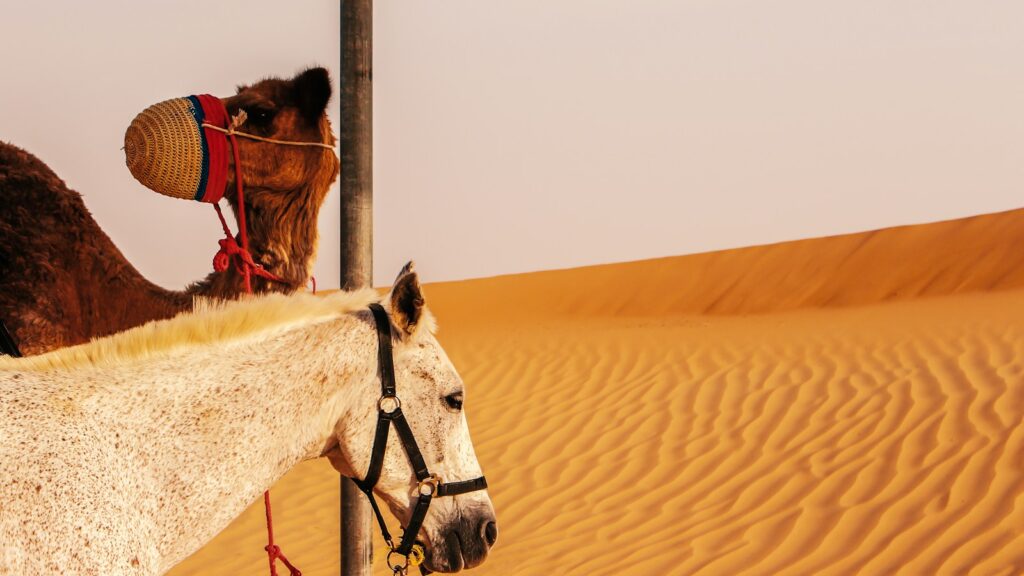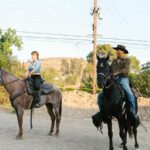In the unforgiving expanses of desert landscapes, where water is scarce and temperatures swing dramatically between scorching days and frigid nights, a special kind of equine partner has emerged as invaluable to ranchers and cowboys. These resilient ranch horses have adapted to thrive in environments that would challenge or defeat other breeds, becoming essential working animals in arid regions worldwide. Through centuries of selective breeding and natural adaptation, certain horse breeds have developed remarkable physical and temperamental traits that allow them to withstand extreme heat, navigate treacherous terrain, and maintain their working ability with minimal resources. These desert specialists represent the perfect fusion of hardiness, intelligence, and endurance – qualities that make them irreplaceable assets in some of Earth’s most challenging working environments.
Arabian: The Original Desert Horse
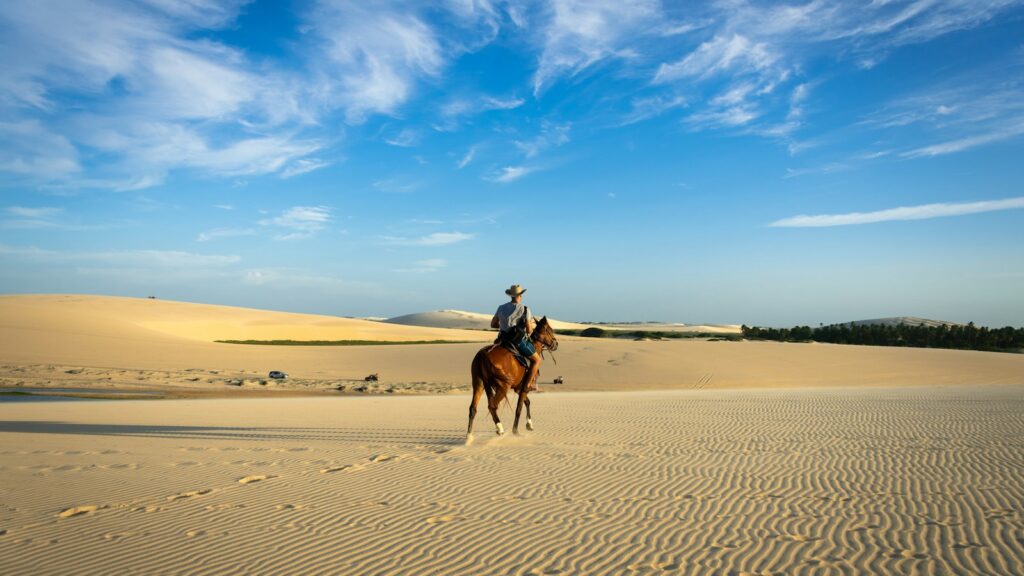
Arabians stand as the quintessential desert horse, with a lineage stretching back thousands of years in the harsh landscapes of the Middle East. Their distinctive physical characteristics – including fine skin, large nostrils, and efficient cooling systems – evolved specifically to manage extreme heat and water conservation in desert environments. The breed’s compact build combines surprising strength with remarkable endurance, allowing them to travel great distances across punishing terrain while requiring minimal water. Beyond their physical adaptations, Arabians possess exceptional intelligence and a strong bond with human handlers, making them responsive partners in demanding ranch work where quick thinking and trust are essential.
Mustangs: America’s Desert-Adapted Wild Horses
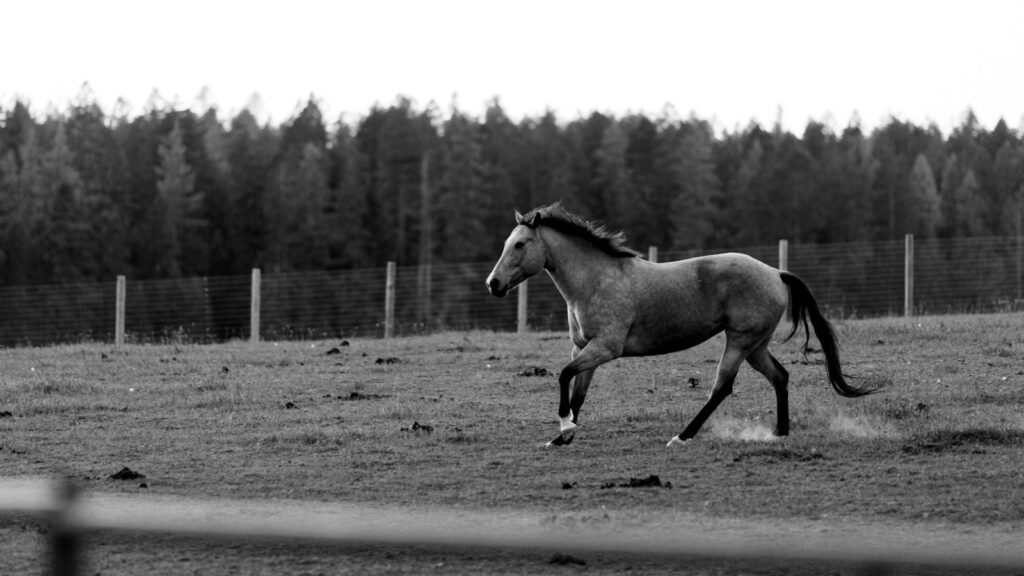
Mustangs represent nature’s own experiment in creating the ideal desert ranch horse through the crucible of natural selection in the American West. Descended from horses brought by Spanish conquistadors, these animals have survived for centuries in arid environments, with only the most adaptable individuals passing on their genes. Their hooves tend to be exceptionally hard, developed through generations of traversing rocky desert terrain without human intervention. Mustangs typically display remarkable metabolic efficiency, able to maintain healthy weight and working condition on sparse desert vegetation that would leave many domestic breeds malnourished. When gentled and trained, these horses bring their survival-honed instincts to ranch work, demonstrating impressive surefootedness and weather resilience that makes them particularly valuable in remote desert ranching operations.
Quarter Horse: Desert Workhorse Extraordinaire

The American Quarter Horse has established itself as a premier desert ranch horse through its unique combination of strength, speed, and adaptability to harsh conditions. Their muscular build and legendary “cow sense” make them invaluable for managing livestock across expansive desert ranches, where their short-distance speed proves perfect for quick bursts of activity required in cattle work. Desert-raised Quarter Horses often develop particularly efficient thermoregulation, allowing them to work effectively even during the hottest parts of the day when other breeds might struggle. The breed’s generally calm temperament serves them well in unpredictable desert environments, where sudden dust storms, wildlife encounters, or challenging terrain demand a level-headed mount that won’t spook easily. Many ranchers specifically select Quarter Horses with bloodlines proven in desert regions, knowing these animals will require less supplemental feed and water while maintaining their working condition.
The Akhal-Teke: Desert Endurance Specialist
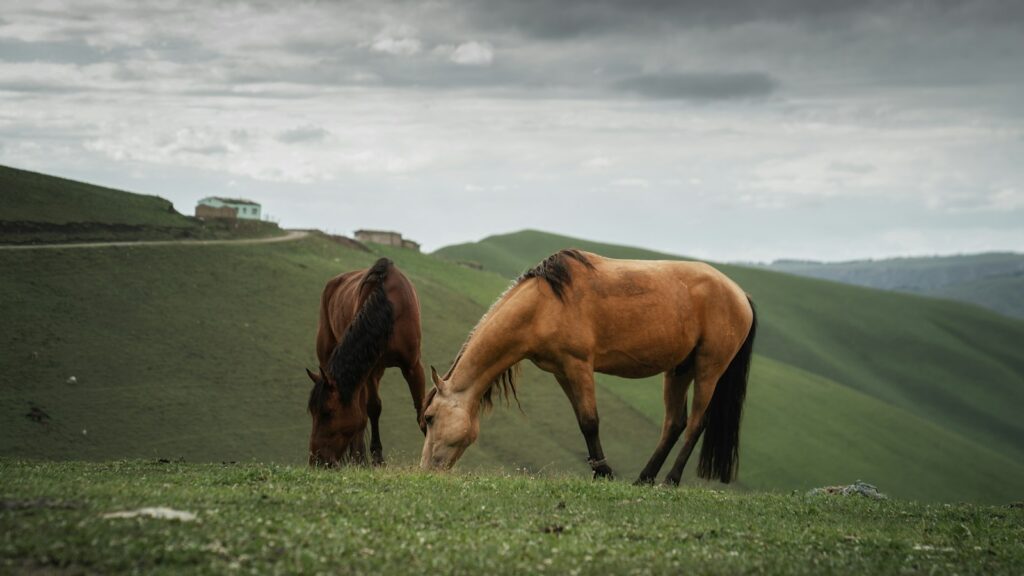
Originating from the harsh deserts and steppes of Turkmenistan, the Akhal-Teke represents one of the world’s oldest and most distinctive desert-adapted breeds. Their sleek, almost metallic coat reflects heat while their lean physique maximizes efficiency in environments where extra body mass would require precious additional resources. Renowned for extraordinary endurance, these horses can cover vast distances across desert landscapes while maintaining energy reserves that would leave other breeds exhausted. The breed’s metabolic adaptations allow them to thrive with minimal water and forage, making them particularly valuable in the most extreme desert ranching environments where resources are scarce. Despite their somewhat independent nature compared to other ranch breeds, their intelligence and loyalty to a single rider make them excellent partners for experienced handlers working in remote desert areas.
Criollo: South American Desert Survivor
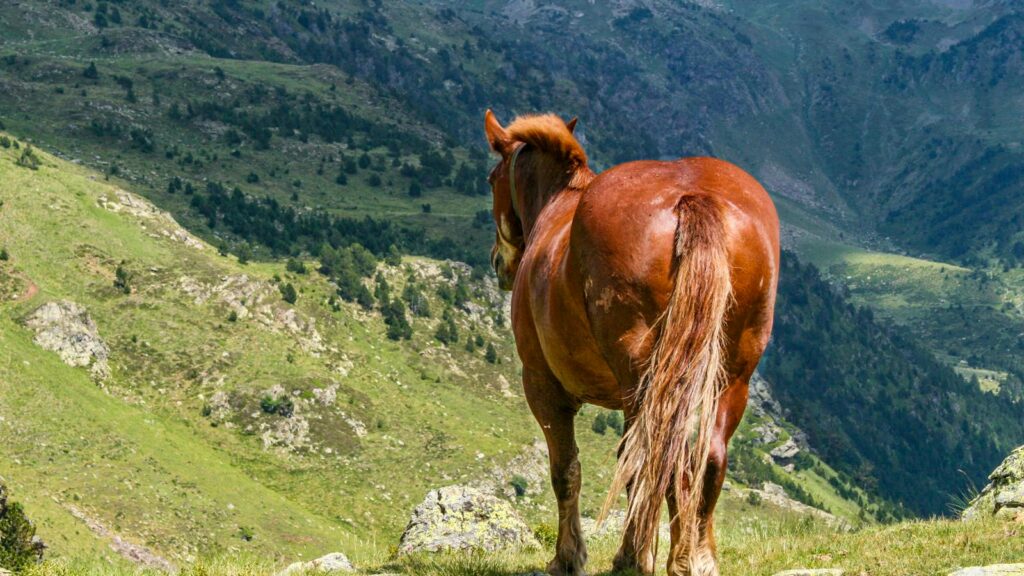
The Criollo horse, developed across the arid regions of South America, demonstrates remarkable hardiness that makes it perfectly suited for desert ranch work. Their genetic background includes Spanish horses that survived natural selection in some of the continent’s harshest environments, creating animals with exceptional stamina and disease resistance. These horses possess an almost legendary ability to travel for days with minimal water and forage, a critical adaptation for ranch work in remote desert regions. Criollos typically display impressive heat tolerance combined with resistance to dramatic temperature fluctuations common in desert environments where daytime heat gives way to frigid nights. Their strong hooves and sure-footed nature make them ideal for navigating the varied desert terrain encountered during long cattle drives or boundary patrols on large ranches.
Australian Stock Horse: Desert Champion of the Outback
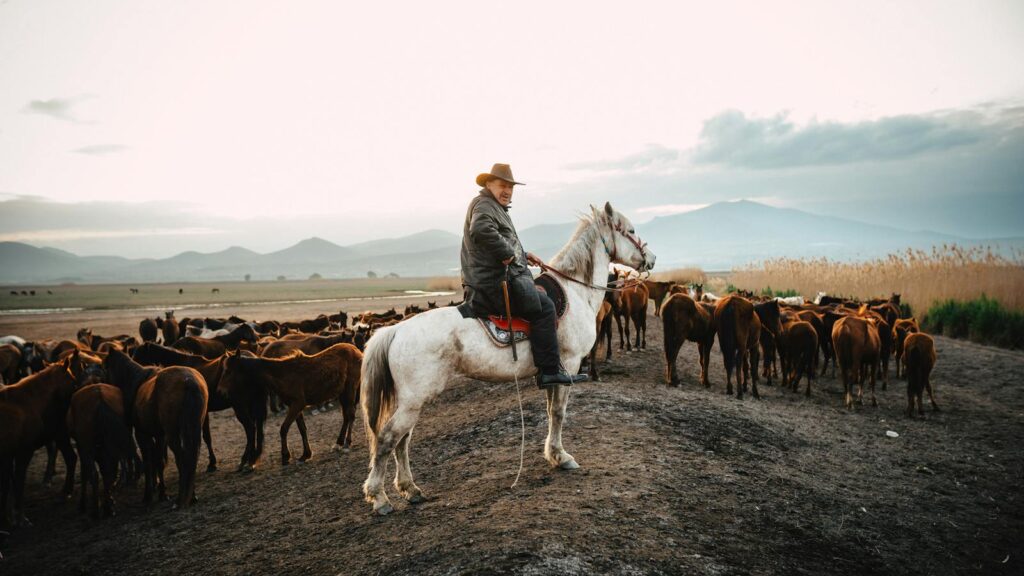
The Australian Stock Horse has been shaped by the unique challenges of the continent’s vast arid interior, creating a breed perfectly suited to desert ranch work. Their development included crossing hardy local breeds with imported Thoroughbreds, Arabs, and Quarter Horses to create an animal combining endurance with intelligence and cow-working ability. These horses demonstrate exceptional heat tolerance, able to work effectively even during the extreme temperature peaks common in Australia’s desert regions. The breed’s remarkable adaptability to poor-quality feed makes them particularly valuable in drought conditions when desert vegetation becomes even more sparse than usual. Australian Stock Horses typically maintain good condition with minimal supplemental feeding, an essential quality for ranch horses in remote desert operations where bringing in additional feed represents a significant logistical challenge.
Barb Horse: North African Desert Master
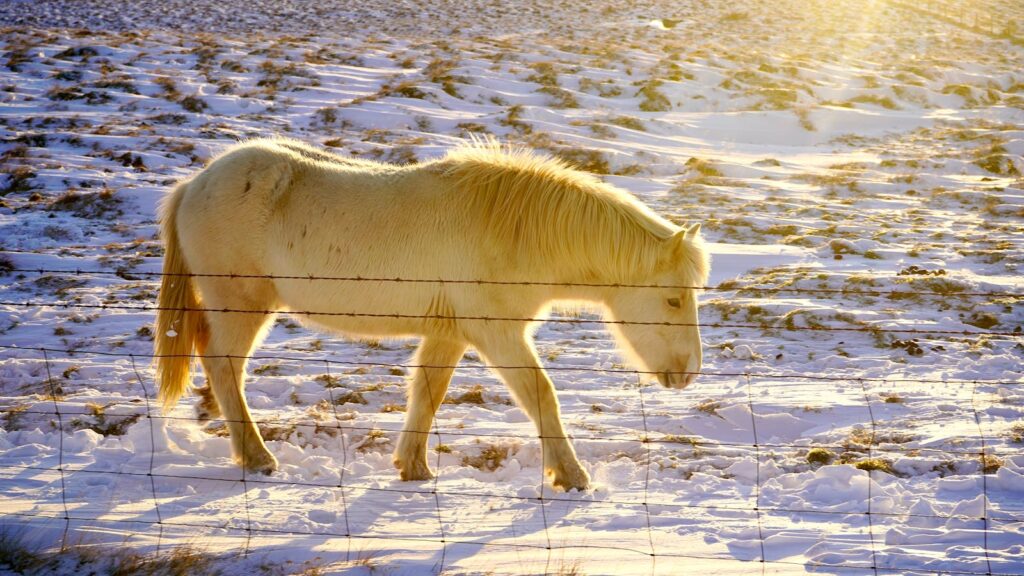
The Barb horse, native to the North African desert regions, carries thousands of years of adaptation to some of the world’s most challenging arid environments. Their compact, muscular build houses remarkable endurance capabilities that allow them to work tirelessly across vast desert expanses. The breed’s natural frugality with resources means they require significantly less water and food than many other horses while maintaining their working condition. Barbs possess particularly tough hooves that resist cracking even in the harshest rocky terrain, reducing the need for shoes in many desert ranching applications. Their alert, intelligent nature makes them excellent partners in environments where predators, challenging terrain, or sudden weather changes demand quick reactions and good judgment from both horse and rider.
Physiological Adaptations for Desert Survival
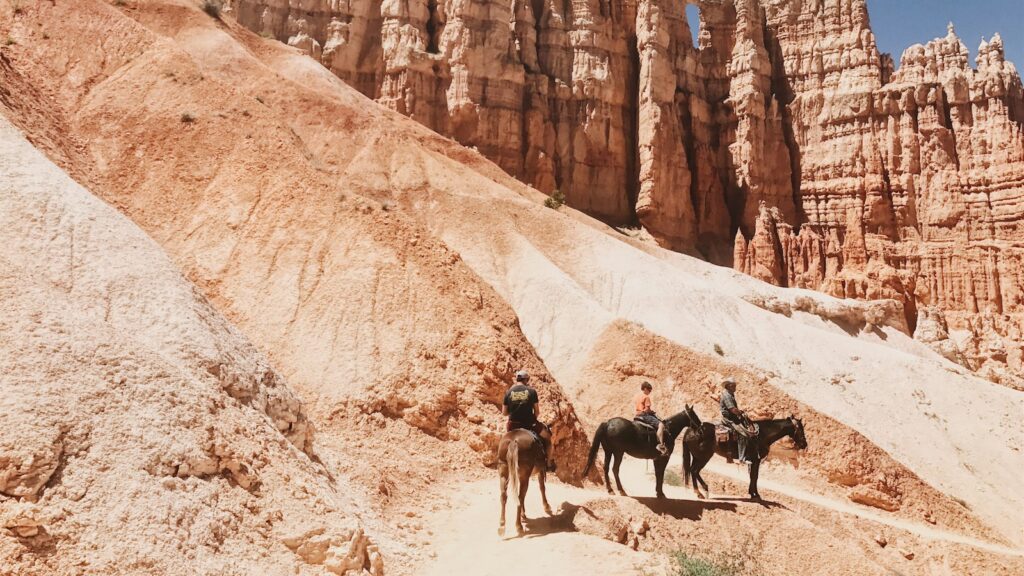
Desert-adapted ranch horses display remarkable physiological adaptations that allow them to thrive in harsh arid environments. Their thermoregulation systems typically function more efficiently than those of horses from temperate regions, with some breeds able to withstand body temperature fluctuations that would cause heat stress in others. Many desert breeds develop specialized blood vessel structures that enhance cooling efficiency, particularly in the nasal passages where incoming air is preconditioned before reaching the lungs. Their digestive systems often show enhanced ability to extract maximum nutrition and moisture from marginal forage, with some breeds able to process desert plants that contain compounds toxic to other horses. Kidney function in these animals frequently demonstrates extraordinary efficiency in water conservation, allowing them to maintain hydration with surprisingly small water intake compared to non-desert adapted horses.
Behavioral Adaptations to Desert Life
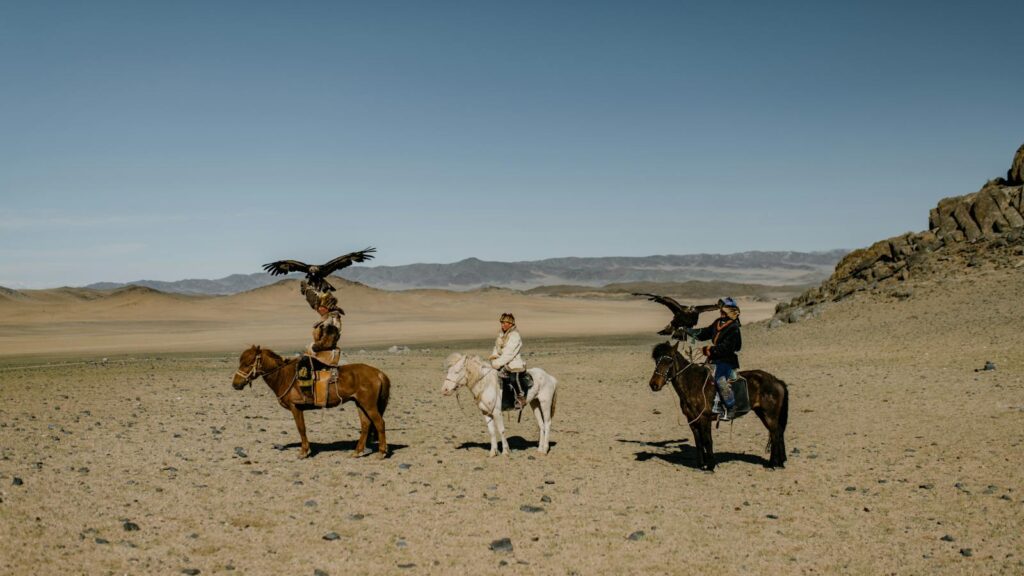
Beyond physical adaptations, resilient desert ranch horses develop specialized behaviors that enhance their survival and working abilities in harsh environments. Many instinctively seek shade during the hottest parts of the day when not working, positioning themselves to maximize exposure to cooling breezes while minimizing direct sun. Desert-adapted horses often display more deliberate movement patterns, conserving energy through efficiency rather than expending it unnecessarily – a critical adaptation where food resources are limited. These horses typically develop heightened awareness of their surroundings, particularly regarding potential water sources and changes in weather patterns that might signal approaching storms. Perhaps most importantly for ranch work, desert horses often show remarkable patience and calm during challenging conditions, maintaining their working temperament even when hot, thirsty, or tired – qualities that can make the difference between success and failure in demanding ranch operations.
Training Considerations for Desert Ranch Horses
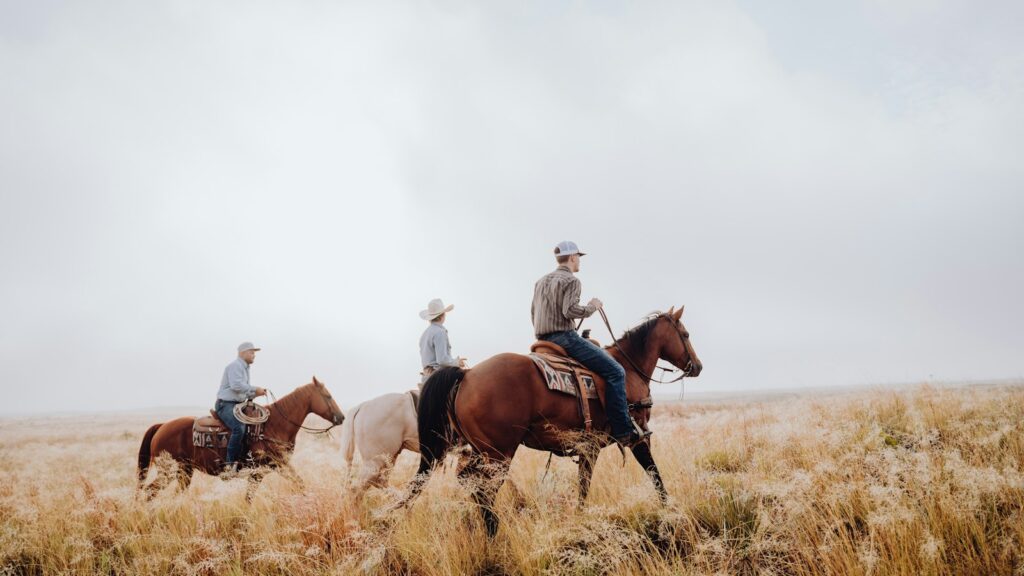
Training horses for desert ranch work requires specialized approaches that acknowledge the unique challenges these animals will face. Early conditioning must gradually build heat tolerance and endurance, with training sessions scheduled during progressively warmer parts of the day to develop the horse’s ability to work effectively in high temperatures. Water management becomes a critical training element, with horses gradually taught to work for longer periods between drinks while handlers closely monitor hydration status. Particular attention must be paid to developing secure footing on varied desert terrain, with young horses intentionally exposed to sand, gravel, rock outcroppings, and dry washes under controlled conditions before facing these challenges during actual work. Training must also incorporate exposure to desert-specific challenges like dust storms, flash floods, and encounters with desert wildlife including rattlesnakes, creating a mount that remains calm and responsive even in potentially dangerous situations.
Specialized Care Requirements
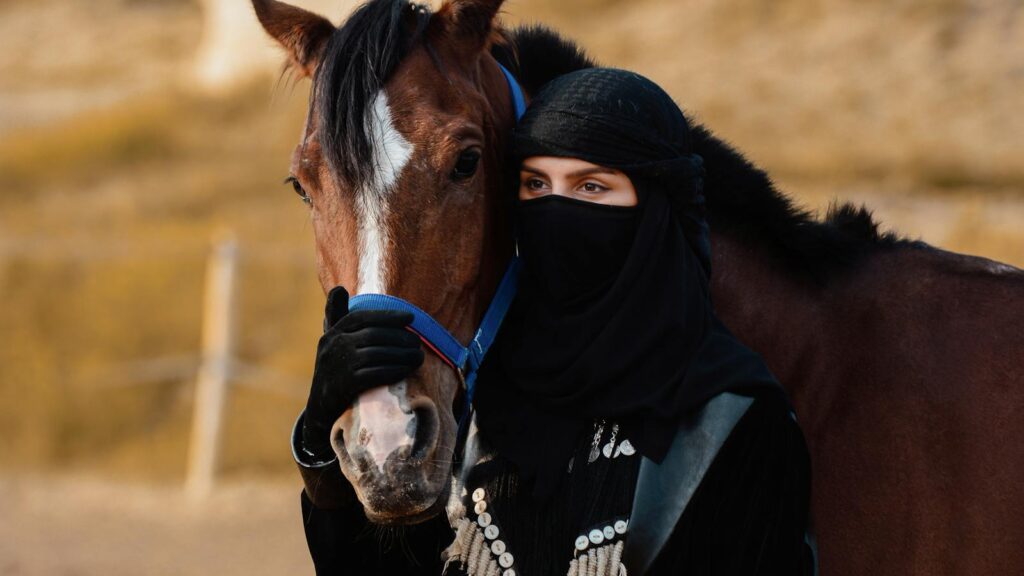
Even the most resilient desert ranch horses require specialized care practices to maintain their health and working ability in harsh environments. Careful hoof management becomes essential, with regular trimming that preserves the natural toughness of desert-adapted hooves while preventing cracks from extreme dryness. Nutritional programs must account for the unique challenges of desert grazing, often supplementing specific minerals that may be lacking in desert vegetation while avoiding overfeeding that would create metabolic inefficiency. Water management requires particular attention, with horses provided consistent access to clean water while still encouraging the efficient drinking habits that desert work necessitates. Skin and coat care must address the intense sun exposure these horses experience, with some ranchers applying sunscreen to pink-skinned areas and scheduling regular grooming to remove built-up sand and dust that can cause irritation.
Modern Breeding Programs for Desert Resilience
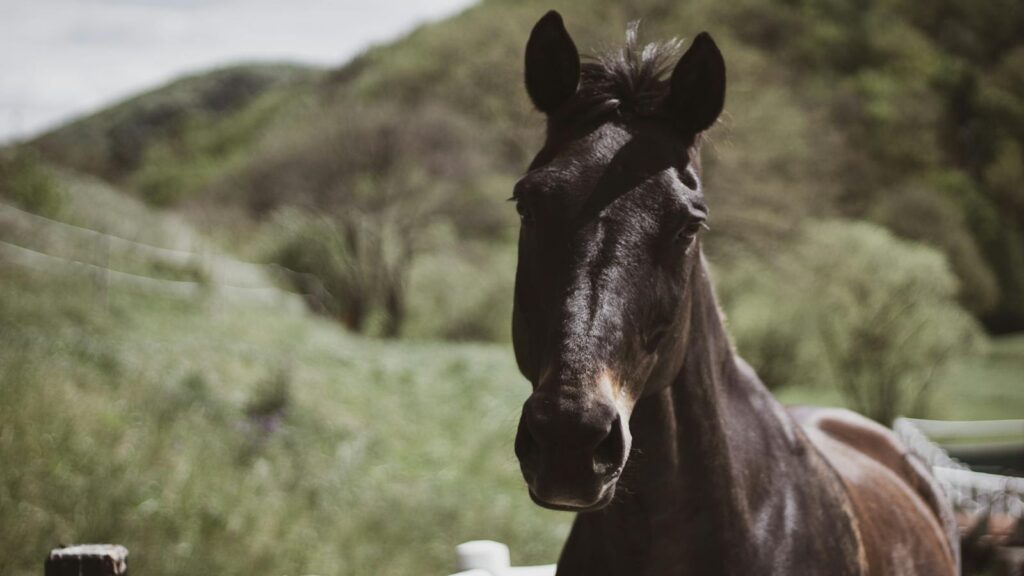
Contemporary breeding programs increasingly focus on preserving and enhancing the traits that make certain horses exceptional desert ranch partners. Some specialized breeders maintain careful selection practices prioritizing heat tolerance, metabolic efficiency, and hoof durability – sometimes testing young prospects under controlled conditions to identify the most promising individuals. Genetic research has begun identifying specific markers associated with desert adaptation, allowing for more scientific approaches to breeding decisions aimed at enhancing these qualities. Many breeding programs incorporate performance testing in actual desert conditions, evaluating young horses’ ability to maintain condition, soundness, and working attitude under the challenging circumstances they’ll face in their working lives. The most successful programs balance traditional breed characteristics with practical functionality, recognizing that the ideal desert ranch horse combines physical adaptations with the temperament and trainability needed for effective partnership with human handlers.
The Future of Desert Ranch Horses
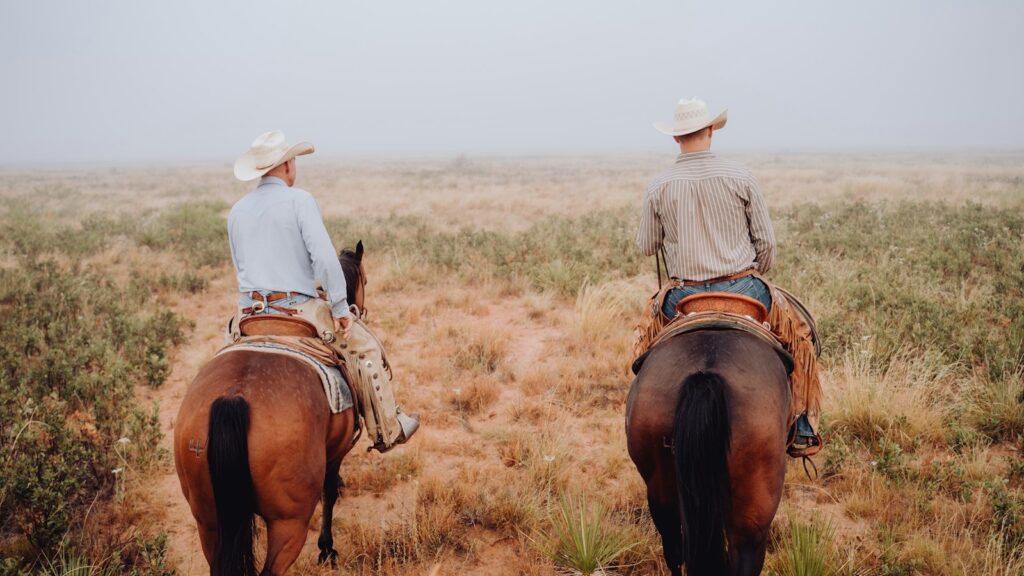
As climate change introduces new challenges to ranching operations worldwide, the remarkable adaptations of desert-specialized horse breeds are gaining renewed appreciation and relevance. Regions experiencing increasing aridity and temperature extremes are seeing growing interest in horse breeds with proven desert performance, sometimes introducing these genetics to improve local stock. Conservation efforts for historically significant desert breeds like the Akhal-Teke, Barb, and certain Mustang strains have intensified, recognizing their genetic resources may hold keys to equine adaptation in an increasingly challenging climate future. Modern ranchers are increasingly documenting and sharing best practices for maintaining horse health in extreme conditions, creating resources that benefit both traditional desert operations and those newly facing similar challenges. As we look ahead, these resilient equine partners may prove not just working animals but important models for adaptation and resilience in a changing world.
conclusion
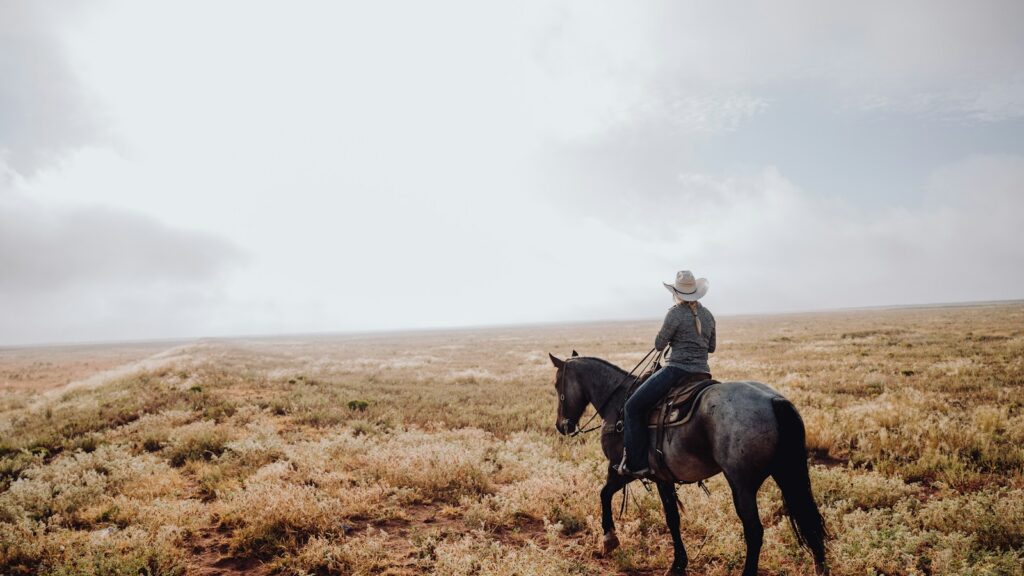
The most resilient ranch horses in desert landscapes represent more than just working animals – they embody the remarkable adaptability of equines to some of Earth’s most challenging environments. Through generations of both natural selection and careful breeding, these horses have developed the perfect combination of physical toughness, metabolic efficiency, and level-headed temperament needed to thrive where other breeds might simply survive. As we face increasingly unpredictable climate patterns and expanding arid regions globally, the genetic resources and adaptive strategies embodied in these remarkable animals may prove more valuable than ever before. The special partnership between desert ranchers and their equine counterparts, forged through shared challenges in harsh landscapes, continues to evolve while maintaining the timeless qualities that have made certain horse breeds indispensable partners in desert environments for thousands of years.

